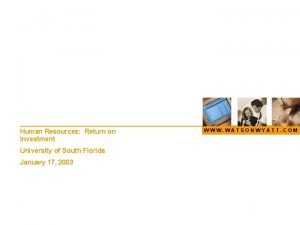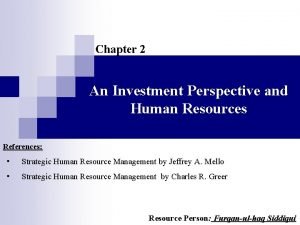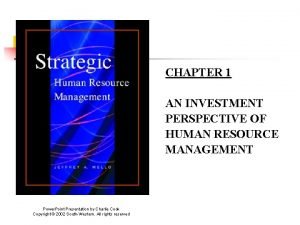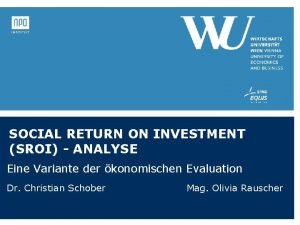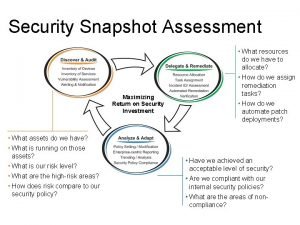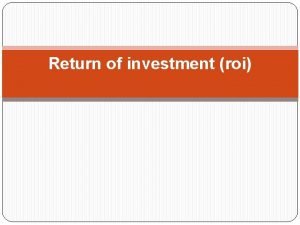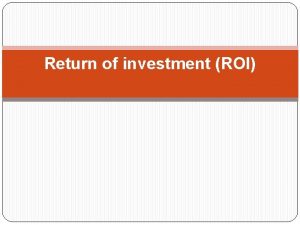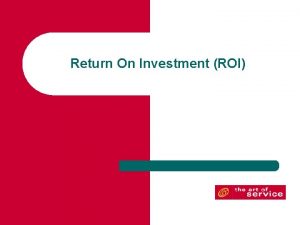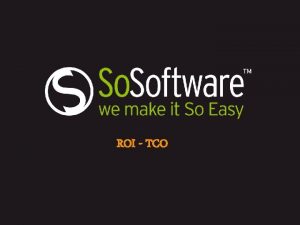Human Resource Return On Investment The ROI measures








- Slides: 8

Human Resource - Return On Investment

The ROI measures the financial return on an investment made, or it can be applied to a business measuring the performance of the firm by assessing the net profit compared with the overall net worth of the company. In more recent years, the ROI concept has been adopted by other industries to evaluate projects and programs on a smaller scale. Importance of ROI to HR Using quantifiable metrics improves the credibility of HR as a profession, and allows upper management to identify specific, measurable ways that HR services benefit the organization. It's no longer enough to state that a certain program is believed to be beneficial -- you need to be able to prove the worth of your actions.

Examples of ROI in HR HR can use ROI metrics to analyze the value of almost any of its services, as long as a dollar cost can be determined. For example, if HR introduces a new health and safety program, its effectiveness can be measured by the associated reduction in costs of work-related injuries. The value of a new employee orientation program can be measured in terms of an ROI by assessing the costs saved by correlated reductions in turnover. Diversity programs, HR information systems, training, development and mentoring initiatives are additional examples of HR programs that can be measured by the ROI calculation.

Return On Investment (ROI) � Benefit/Cost Ratio Program Benefits BCR Program Costs Benefit Cost ROI (%) x 100 Cost

Challenges in Calculating ROI � Identifying Costs � Quantifying Costs � Identifying Benefits � Quantifying Benefits

Basic Elements of Measurement � Cost � Time � Quality � Satisfaction (correlated with productivity) � Performance vs. Productivity � Effects on business priority (i. e. , revenue) � T T P (Time-to-productivity)

Factors Measured by Fortu ne 500 Companies � Turnover costs � Employee replacement costs � Economic value of employee behaviors (absenteeism, smoking, etc) � Economic benefits of: developing a superior selection test various training levels additional recruiting increasing job satisfaction, organizational commitment, or similar job attitudes - high, medium & low performance on a particular job -

General List of Human Capital Success Metrics � Average change in performance-appraisal rating overtime � Climate surveys � Customer complaints/praise � Customer satisfaction/loyalty � Employee commitment survey scores � Employee competency growth � Employee development/advancement opportunities � Employee job involvement survey scores � Employee satisfaction with advancement � Employee turnover by performance level and by controllability � Extent of cross-functional teamwork � Extent of organizational learning � Extent of understanding of the firm’s competitive strategy and operational goals

